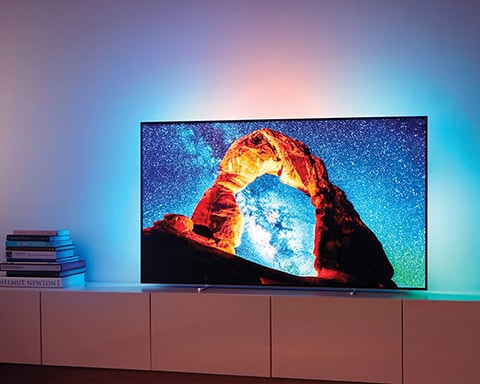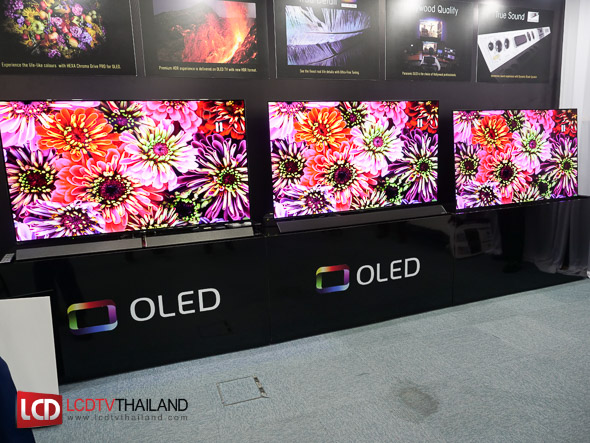

One thing to bear in mind is that one of the two HDMI 2.1 sockets is also the one that handles eARC (Enhanced Audio Return Channel), which means that if you have two HDMI 2.1 sources you’re not also going to be able to send sound via eARC to a soundbar or AV amplifier. Input lag is very low, at around 14ms, and there's an HGiG picture setting for more accurate HDR tone mapping. Last year's Philips OLEDs, while generally excellent, were notably lacking next-gen gaming features, but that isn't the case with the OLED806, which has two 48Gbps HDMI 2.1 sockets that support Variable Refresh Rate and Auto Low Latency Mode. The performance is further enhanced by the beautiful Ambilight technology, which extends the onscreen action to the wall around the TV in the form of coloured light.

It takes more effort than most to find the best picture settings, and the default picture presets offered for each signal type are often less than ideal (Dolby Vision signals don't activate a proper Dolby Vision mode, for example), but with a bit of tweaking the OLED806 can be made to look both very accurate and supremely sharp and punchy. Whatever the situation, the 48-inch OLED is an excellent choice, and the Philips 48OLED806 is the best 48-inch OLED you can currently buy. You might have a smaller living space, or want a great gaming TV, a screen for the bedroom or perhaps the 48-inch option is a compromise with your less AV-enthusiastic housemate. The Philips 48OLED806 is one of the second generation of such televisions, which promise genuine flagship performance at a more manageable screen size – something that’s impossible to find on the LCD side of the market. In a world of ever larger TVs, the 48-inch OLED remains a beacon of hope for those with more modest needs. So, which OLED TV should you buy? Time to find out.

Specifications vary, too, particularly where HDMI features are concerned. While you can pretty much guarantee excellent blacks and contrast from any OLED, there are lots of differences between models, from sharpness and motion processing, to colour accuracy, brightness and shadow detail. LG actually manufactures all of the OLED panels used in OLED TVs today, but don't go thinking that means they all perform the same. We've rounded up the best OLED TVs out of all the ones we've tested below, including discounted models from 20 – 2022 TVs will likely start appearing from March onwards.
#OLED TV MALAYSIA PLUS#
The very best OLED televisions combine 4K and HDR technology to devastating effect, so you'll find support for HDR10+ and/or Dolby Vision plus HDR10 and HLG as standard. If you're wondering how OLED compares to Samsung's rival QLED technology, check out our OLED vs QLED comparison. Previously, this meant you didn't see OLED TVs under 55 inches, but 2020 saw a 48-inch set from LG hit the market and Sony followed with its own 48-inch model, and more arrived in 2021. They are more expensive to produce, though. OLED is also a more efficient and eco-friendly technology than LCD. This means they can be ultra-thin, and because each pixel can be switched off and on individually, they tend to deliver some of the best black levels and contrast in the TV business. Unlike LCD TVs, OLED flatscreen TVs don't need a backlight. So what is OLED? It's basically the next step on from LCD. Best of all, while OLED TVs were eye-wateringly expensive when they first launched, prices have slowly dropped and you can now find some excellent OLED (Organic Light-Emitting Diode) TVs below that don't cost the earth – though they are still undeniably still more premium than most LCD TVs.

If you're looking for the best TV, you're most likely focused on OLED TVs, such is their reputation for awesome performance. Best OLED TVs Buying Guide: Welcome to What Hi-Fi?'s round-up of the best OLED TVs you can buy in 2022.


 0 kommentar(er)
0 kommentar(er)
